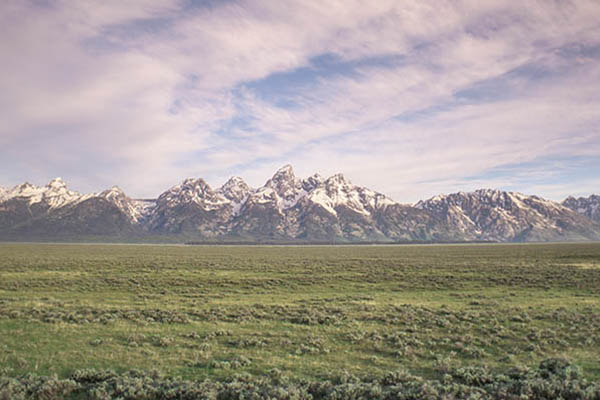
As of Friday, February 23, the Snake River Headwaters is recording snow water equivalents at 90% of median, compared to 106% in 2023 and 83% in 2022 for the same day. As we enter late winter and early spring, please be mindful that this is a difficult time for many species as they have lower fat reserves and are waiting for spring vegetation growth. It's essential to maintain a respectful distance and avoid actions that may impact wildlife behavior.
- By late February, bull moose have dropped their antlers. To tell the difference between males and females, look for the antler attachment points, called pedicles, on the heads of males or the white fringed area around the tail of females.
- Wolves have finished breeding, and like domestic dogs, their gestation period is 63 days. Females will whelp pups in mid-to-late April, but the pups will not emerge from dens until May.
- As the snow deepens, foxes and coyotes will hunt for rodents moving under the insulating layer of snow. To locate their potential prey, these canids listen carefully for any sound and then make a big arcing jump, diving mouth first into the snow. They are frequently successful in capturing small meals.
- Long-tailed weasels are crust cruising and leaving behind tell-tale signs of their activities—dumbbell-shaped tracks zigzagging across the snow’s surface and small holes that plunge to the subnivean (below snow) environment where they find prey.
- The small, isolated population of greater sage-grouse that occupies the valley year-round survives the winter by foraging on sagebrush leaves exposed above the snow.
- Park staff usually conduct an annual winter sage-grouse trend count in February when the snowpack is at its deepest and sage-grouse are concentrated in areas where mature sagebrush is exposed. However, due to lower snow levels this winter, biologists decided not to make the count as the grouse were too widely spread. The late arrival of deeper snows means that grouse will have had abundant forage available. The annual counts will still be conducted during the courtship displays that start in late March on lek sites.
- Mule deer that summer within Grand Teton are on their winter ranges along the Shoshone River near Cody; near Dubois and Crowheart to the east; in Idaho’s Teton Canyon and Sand Creek Desert to the west; and near Pinedale, Farson, and Rock Springs to the south. Other mule deer remain in the area year-round. Some animals, like mule deer, migrate long distances to avoid the harsh winter conditions encountered in Jackson Hole and to find more accessible foods where snow cover is reduced.
- During mid-winter, vegetation can be exposed on southern aspects where trees radiate warmth, causing the snow around the base of the tree to melt. Resident mule deer will move from tree well to tree well to take advantage of the available browse.
- Pronghorn are poorly adapted to deep snow. Pronghorn that summer in Grand Teton migrate to winter in the Green River Basin near Pinedale, where snow is not as deep. These pronghorn suffered significant casualties in the severe and long winter of 2022/2023. Seventy-nine pronghorn were counted in Jackson Hole last summer, compared to 708 the previous year - roughly a 90% decline in numbers.
- As days gradually lengthen, ravens, bald eagles, and great-horned owls—some of the area’s earliest nesters—have begun courtship activities. Great-horned owls will hoot to attract a mate and defend their territory. Their hoots are often easier to hear on the cold nights of winter when there is less foliage to dampen the sound.
- River otters are active near water bodies all winter, using holes in the ice to move between land and water. Otters are well adapted to life in cold water with a thick, protective fur coat made of two layers, including one that is essentially waterproof, as well as a clear second eyelid, making vision underwater easier even in the cold. With short legs, webbed feet, and sleek bodies otters are strong swimmers. Sliding across the ice is another great way of playing and getting around.
Please consider the space and energy conservation needs of wildlife during winter and do not approach them closely, even though they may appear unconcerned. In many cases, they simply have nowhere else to go until snow depths decrease.










